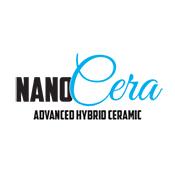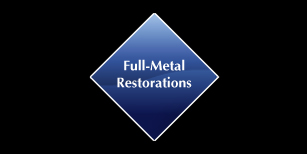

Key Features:
| Properties | Measurement |
|---|---|
| Vickers Hardness | (200 p) 710 MPa ** |
| Modulus of Elasticity (Young Modulus) | 10,000 MPa ** |
| Flexural Strength | 175 MPa ** |
| Compressive Strength | 480-500 MPa ** |
| Density | 1.89 g/cm3 |
| Chemical Solubility | 1.29 μg/cm3 |
| Water Absorption | 16.94 μg/mm3 |
| Water Solubility | 0.04 μg/mm3 |
| Biocompatibility | Confirmed |
| Ceramic Filler | 70.02% (wt) |
| Color Stability | Confirmed |
| Shade Consistency | Confirmed |
| Surface Finish | Smooth |
| Bond Strength | 27-37 MPa |
NanoCera Advanced - Hybrid Ceramic
The Strongest, Most Flexible,
Translucent Ceramic in Dentistry.
At 480 MPa, NanoCera's compressive strength is the strongest of all of the esthetic all ceramics and ceramic hybrids on the market. At 10 GPA, NanoCera is the only ceramic that bends and gives so it won't chip, crack or fracture under stress. Whereas other ceramics must be painted/shaded to "appear" translucent, NanoCera truly is a translucent material ideal for cosmetic dentistry.
You can learn more about this incredible new product by visiting the NanoCera website.
Ideally Suited for Implants, Cosmetic, and Minimally Invasive Dentistry.
Implant Supported Crowns
Removing the periodontal ligament for an implant, leaves the patient without this very important shock absorber and without sensation, which is why most ceramics break under stress and put too much strain on the implant.
Hybrid Implant Dentures
Ultra is stronger than bar-supported acryllic, meaning that not only will the entire denture be stronger, but each individual tooth will be stronger than any common bar-supported hybrid implant solution.
Milled Inlays and Onlays
With almost no additional prep work, dentists can either replace alalgams or offer milled inlays and onlays for the strongest possible and least invasive dental restoration.
Translucent Veneers
Unlike opaque ceramics, NanoCera translucent veneers offer true transparency features and a chameleon effect, blending with the colors of surrounding and underlying teeth.
Esthetic Crown and Bridge
Cosmetic dentists use NanoCera as a less porous more stain-resistant alternative to Empress or e.max, giving the patient a luster and polish and stain fighting attributes that outlast any other cosmetic restoration.
PFM and Metal Replacements
As five and ten-year-old PFMs, metal crowns, and even older ceramics fail under, or simply for cosmetic reasons, NanoCera is the ideal replacement for nearly all older-generation restorations.
Bridges and Bruxers
The flex characteristics and low abrasion of NanoCera make it ideal for Bruxers, especially those who are concerned about the hardness of zirconia, or those who seek a more esthetic and kinder solution.
Minimally Invasive Dentistry
Dentists who practice Minimally Invasive Dentistry use NanoCera as their material of choice, because it is easily bonded to any tooth surface, and it gives flex for an implant where destroying two neighboring teeth would be the only other alternative.
Indications for Use
NanoCera is a hybrid nanoceramic/resin milling material that is a highly esthetic and easy-to-use alternative to all-ceramic restorations. Ultra is milled into dental restorations using a dental CAD/CAM system and bonded to tooth structure and/or implant abutments with adhesive resin cement.
NanoCera Is indicated for use as a dental restoration including inlays, onlays, veneers, crowns and bridges. NanoCera is not indicated for uses other than those listed.
Tooth Preparation
Inlay and Onlay Prep: Traditional inlay and onlay prep is recommended. Taper the cavity walls 5-6 degrees to the long axis of the preparation. Do not undercut. Internal edges should be rounded. Incisal/occlusal reduction should be at least 1.0 mm below the bottom of the fissure and at least 1.5 in the area of the isthmus or cusps.
Veneer Prep: Reduction of the labial surface should be at least 0.6 mm and 0.4 mm at the gingival. The reduction of the incisal, labial-lingual angle should be 0.5 to 1.5 mm. Margins for the veneers should be in the enamel and above the gingival tissues. Create a chamfer or rounded shoulder. Proximal extensions should be made far enough into the proximal region so that margins do not show and have no proximal-gingival undercuts.
Crown Prep: Axial reduction should be at least 1.0 mm at bottom of the fissure and at least 1.5 mm in the area of the cusps with a 5-6 degree taper. Incisal/occlusal reduction should be 1.5 to 2 mm clearance in centric occlusion and all excursions. Shoulders must extend at least 0.8 mm from the lingual to the proximal contact area. Non-beveled shoulder finish lines are recommended. All line angles should be rounded and surfaces should be smooth.
Bonding Instructions
Do not use hydrofluoric acid (HF) etching, and do not use phosphoric acid to clean the restoration.
- Inspect the design of the restoration to verify a tight fit with minimal cement gap.
- Clean the polished restoration in an ultrasonic cleaner or steam cleaner.
- Blow dry the restoration gently with an air syringe.
- Trial fit the restoration.
- Adjust the restoration if needed.
- Finish and polish the restoration.
- Sandblast / air abrade the bonding surface with aluminum oxide (Al203) 50μm at 2 bars (30 psi).
- Clean the restoration with alcohol and dry. Verify that the surface is free of contamination, including milling debris, milling fluids, saliva, grease, acetone, fit checker, etc.
- Bond the restoration to the tooth with a light or dual-cured adhesive resin cement. Depending on cement, apply the appropriate primer or bonding agents. If no primer is recommended, apply silane to the bonding surface of the restoration according to the instructions provided with the silane.
- Always follow the instructions for resin based materials provided with the cement selected.
Light-curing should be used with thin veneers as dual-curing composites may cause a slight yellowing after curing. A microbrush glued to the veneer or a stick (adhesive) can be used as a retention tool. Fixing the veneer with a finger allows more uniform distribution of pressure during the adhesive cementation.
Adding-on to Restorations
Directions for Build-up or Adding-on to Restorations: You can make additions and repairs to NanoCera restorations with methacrylate-based light-cured restoratives. Restorations made from NanoCera must not be reworked with tungsten carbide tools as such instruments may damage the material. Use only diamond coated milling tools or special polishing tools desired for hybrid ceramic-resin materials. When reworking, use water and exert only slight pressure. This material should not be fired under any circumstances during processing, finishing or build-up/add-on.
Build-up or Add-on guidelines are as follows:
- Extraorally: Roughen the site to be added to with a coarse diamond, stone, or air abrade (sandblast with 50μm aluminum oxide). Clean the restoration in an ultra-sonic cleaner with normal detergent.
- Intraorally: Roughen site to be added to with a coarse diamond, stone or intraoral air abrasion unit. Rinse and clean the prepped site, then dry. Brush on Scotchbond Universal Adhesive to the roughened area for 20 seconds and gently blow dry for 5 seconds.
- Use a Light-cure adhesive for 10 seconds.
- Apply methacrylate-based light-cured restorative and light-cure according to the instructions for use.
- Shape and smooth the addition using a medium wheel or diamond impregnated rubber wheel such as Dialite™. Polish using the appropriate steps in the Restorative Finishing section above.
Important Note: Since dust is formed when grinding dental ceramic products, always wear a face mask or grind when wet. Use an extraction unit in the laboratory.
2014-03-03 07:59:05








